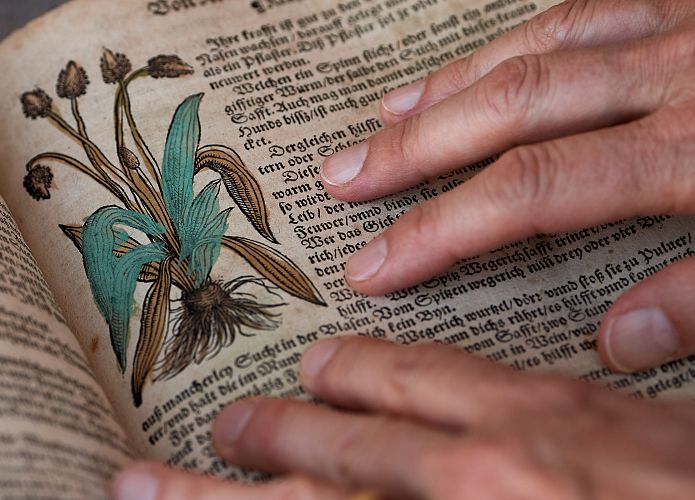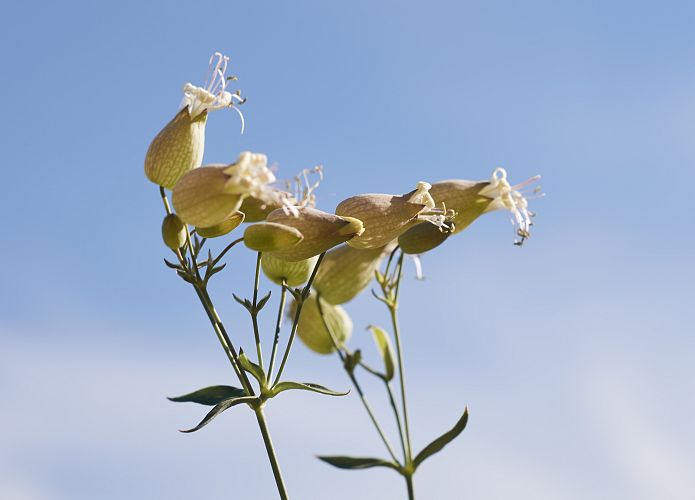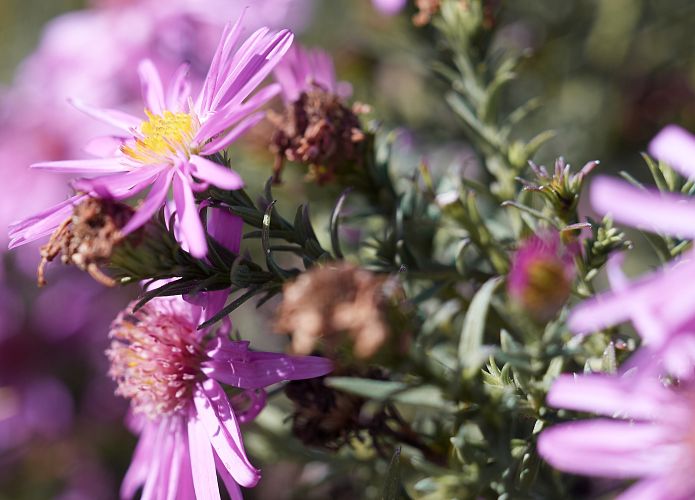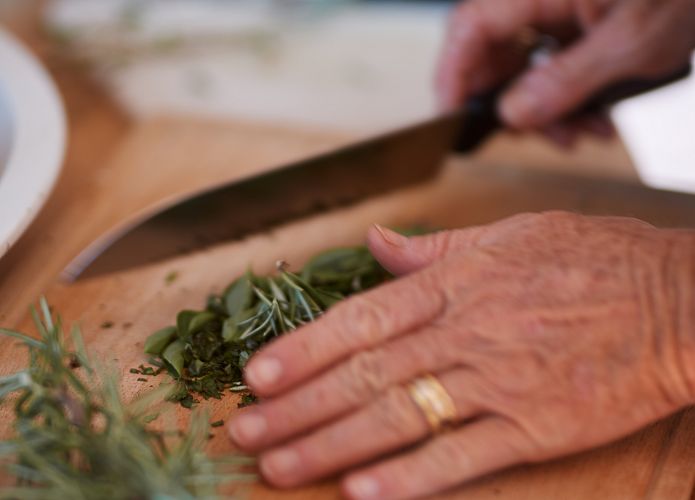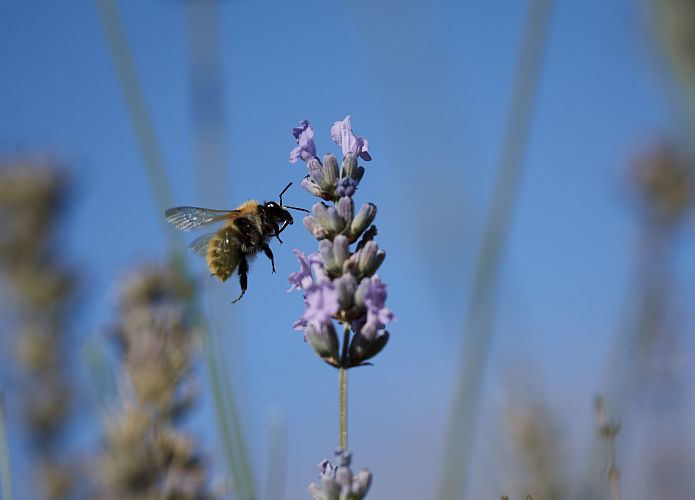Flower Power in the vineyard
Our life with herbs, grasses and flowers
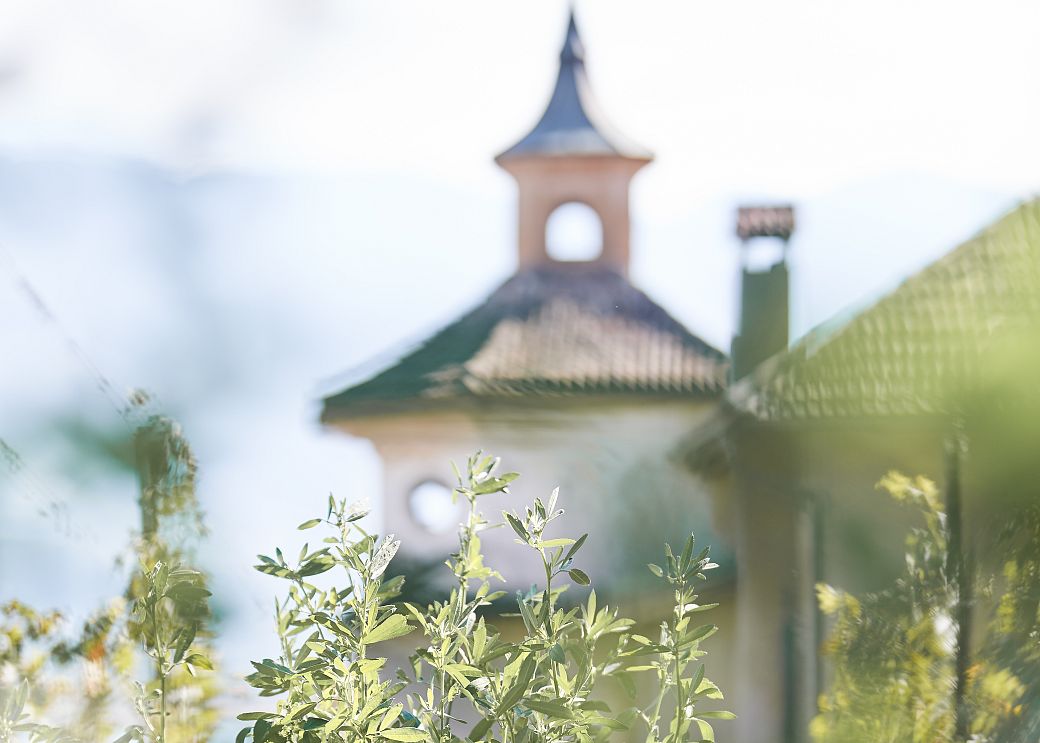
Green, yellow, brown and gray, lots of gray – these were once the colors of our vineyards. Tempi passati! In summer, all the vegetation growing and flowering between the rows of vines is heaven for the bees, butterflies and other inhabitants of the vineyards: the purple, white, blue, pink, orange and many, many shades of green are a beautiful sight – and for us a special delight.
This is what we are thinking as we sit on the terrace for lunch with the Goëss-Enzenberg family in Manincor. It is a day in early October, a day that fulfills all the promises that Alto Adige makes in autumn: an azure sky, a sun strong enough for short sleeves and gentle enough for radiant colors. There is a smell of soil in the air.
We are offered a bowl of nettle soup with a dab of whipped cream for starters, a herb risotto and nettle salad with roasted walnuts for the main course, and chestnut vermicelli as a dessert. As guests of the count’s family, the photographer and writer also get to enjoy the accompanying wines. The walnuts are from the tree in the courtyard, the herbs are homegrown, and the nettles were collected by Countess Sophie yesterday while walking the dog in the lower meadow.
With a contented feeling in our stomachs and a smile on our faces, we are ready to hear about all the things growing in the vineyards – in addition to the vines.
“If you let them, many plants grow by themselves, of course. The thing is that the flora in the vineyard is a reflection of the quality of the soil. Twenty years ago, there were dandelions here and not much else. That has changed in the meantime.”
Background. Herbs, their curative properties and their taste, are something Countess Sophie has always taken very seriously in providing for the family. Her first response to health problems is to alleviate the symptoms and effect a cure with the help of natural remedies.
“It was only logical to step out with the herbs from the family into the vineyard. Everything fell into place. Through biodynamics, we create the conditions the vines need for enhanced vitality and resilience. The crop cover is an essential element in the process.”
On this summer afternoon we are taking the same step. It’s only a short walk, but we take our time and look closely. Out of the general green, individual plants stand out if you only have the patience to look carefully enough. Countess Sophie is familiar with many of them and knows all about them.
Spontaneous or planned? As adherents of biodynamics, we are convinced of the merits of natural spontaneity – as in the case of spontaneous fermentation of the wine in the cellar. Nevertheless, as a rule, the flora in the vineyard is not left to its own devices.
Spontaneous greening is sometimes practiced in the vineyard. Residual seeds in the soil and seeds carried into the vineyard by the wind, people and animals sprout when the conditions are ripe. But the plants involved are not necessarily good for the soil and the vines.
The other option is to produce crop cover through planned seeding. With the right choice of seeds, it is possible to improve soil structure and encourage rooting.
Organic soil management. There are plants with deep roots that create channels through the soil. When these plants wither, the fine root channels remain and water can seep far down into the soil. This is an advantage in the long hot summer months in our area around Lake Caldaro. Thundershowers are not much help because the root channels cannot take so much water and most of it is lost to run-off.
Vineyard crop cover is made up of plants of varying heights. The shade they provide protects the soil from drying out. They also reduce soil erosion. Highly active microbes and symbiotic diversity in the root zone enable the vines to tap mineral nutrients more efficiently.
Flora and fauna. A strip of green and flowers between the rows of vines provides a habitat for insects and all kinds of soil organisms. Biodiversity is one of the foundations of biodynamic working. The more species that live in the vineyard, the greater the protection against possible pests or pathogens – good for the vines, good for the wine.
“After the harvest in the fall, we loosen the soil and sow a seed mix in every second lane between the vines. The other lanes receive the same treatment the following year, so that alternate lanes can always be used for access.”
The properties of the soil in the vineyard are decisive for the choice of cover crop. There are perennial or temporary cover crops and a wide variety of seed mixes. It is important to select the seeds that are most beneficial for the local soil and hence for the vines and to avoid crops that would compete with the vines for water and nutrients.
“Spontaneous, natural vegetation cover would be nice, but it is not yet feasible. But we are hopeful: After a year’s break in crop cover management, we saw in the summer of 2022 which plants can return of their own accord. That was a great moment for us.”
In the fall after the harvest, there is still work to be done in the vineyard. We loosen the soil and sow the selected seed mix. From an experiment without seeding in 2021, we saw that there were still some seeds in the soil, but not enough to have the desired beneficial effects on the soil and humus formation.
At Manincor, we use a customized seed mix adapted to the needs of the site. Many different herbs and grasses, from small ground cover plants to tall stalk plants, grow between the rows of vines. They surrender their roots, seeds and leaves to the soil, and some provide us with pretty flowers or curative benefits.
We walk a little further. Countess Sophie shows us the damage caused by hail to the leaves and vines. The winery team are still congratulating themselves on their good fortune of having brought in so many wonderful grapes despite the adverse weather.
Food for soil. The vegetation cover and the industrious many-legged inhabitants of the vineyard are constantly at work improving the quality of the soil. In addition, the soil is also fed compost – made in Manincor, of course. Countess Sophie finds a last spadeful.
“When I show visitors the gardens, I tell them about all the living organisms that work here for us and perform their miracle year after year. When I show them the compost, they are amazed at how aromatic, rich, and fresh and earthy it smells – contrary to their expectations.”
Back in the house, Countess Sophie leafs through a rare restored book of medicinal herbs from the 16th century, a gift from her grandmother to her herb-loving granddaughter. Some of the herbs in the book can be recognized from the detailed illustrations, while others are now almost unknown. And some are still happily growing in the vineyard – as valuable contributors to our biodynamic style of working.
Plant portrait: Ribwort plantain, Plantago lanceolata L.
As an edible medicinal plant and healthy wild herb, ribwort is very welcome in Manincor’s vineyards. Its roots go down to a depth of up to 60 cm and loosen the soil, which enables it to absorb precious water deep down for the dry months of summer. Growing to a height of 10 to 50 cm, ribwort also helps to shade the soil.
Ribwort has played a role in folk medicine since ancient times. Countess Sophie uses it to treat respiratory illnesses and as a tincture for the skin. In the Middle Ages it was used as an antidote for undesirable love spells.
____________________________________________________________________________________________________________________________________________________________________________________________________
Plant portrait: Phacelia, also known as purple tansy or bee food
Phacelia is nature’s welcome gift to our vineyard and plays a regular part in our annual cover crop seeding. Its roots are dense and absorb nutrients from the soil, which are released after rotting. This improves the soil and helps avert soil fatigue. Phacelia shades the soil and suppresses unwanted competitor plants.
As the name “bee food” indicates, it provides honeybees, bumblebees and butterflies with pollen and nectar. And no wonder, with those seductive purple flowers.
____________________________________________________________________________________________________________________________________________________________________________________________________
Potpourri of plants in the vineyards
As a biodynamic winery, biodiversity is second nature to us, and medicinal and useful herbs, grasses and flowers grow in prolific numbers in our vineyards. They include mallow, vetch, mugwort, ribwort, dock, amaranth, linseed, clover, lamb’s lettuce, violets, millet, yarrow, campion, phacelia, mullein, thistles and wild sage.
Also, at least one rose bush grows in every vineyard. Roses are valuable indicator plants and tell us a lot about the condition of the soil.
____________________________________________________________________________________________________________________________________________________________________________________________________
From the vineyard and into the kitchen
Whether sown by us or carried by the wind into our vineyards, most of the plants that grow alongside the grapes taste good, but not all of them and not to every creature. The bees, beetles and worms – they all find their favorite food here.
For the human palate, some herbs taste strange. But there are some that Countess Sophie picks and brings home to make a fine salad – or a risotto, soup or spread. Many items are dried, while some are preserved in oil or alcohol or processed to make herbal creams.
